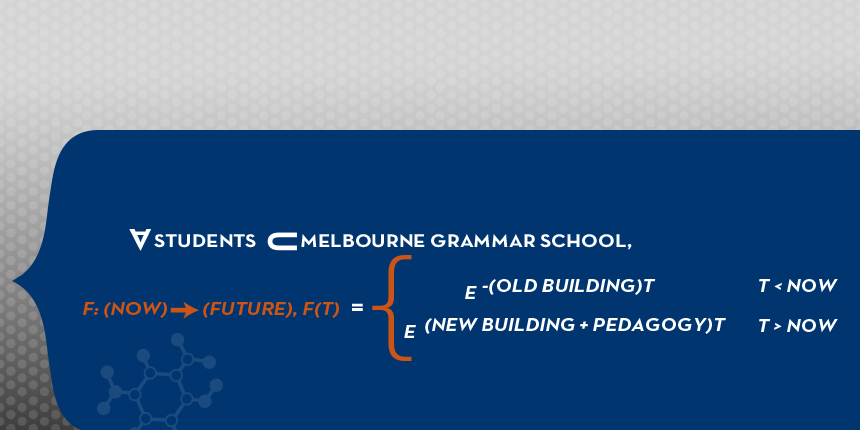Students create a Maths equation to represent complex scenarios.
With the number of students participating in Science, Technology, Engineering, and Mathematics (STEM) related subjects in Australia decreasing, and 75 per cent of the fastest growing occupations requiring skills and knowledge in these areas, schools such as ours face a big challenge.
Part of Melbourne Grammar School’s solution to this challenge is to build a new state-of-the-art Science and Technology Hub at the Senior School Campus. When added to an innovative pedagogical approach - centred on collaboration, experiential learning, innovation and creativity – the result will be to create a unique learning environment that helps to inspire the problem-solvers of the future.

To help graphically represent how the combination of the Science and Technology Hub and an innovative pedagogical approach would create future problem-solvers, the Development Team looked to Mr Andrew Baylis, Director of Education and Research for assistance. He had just been working with some Year 11 philosophy classes on the link between Mathematics and Philosophy. A core thread of the discussions related to Mathematics being a language. After discussion with the Mathematics Department, the problem of how to represent the benefits of the new facilities was presented to a group of students for their input.
The graphic above represents the equation suggested by a current Year 11 Mathematics class from Melbourne Grammar School. The first part of the hybrid function specifies an exponential decay, while the second specifies an exponential growth. While not the only possible representation of the situation (nor is it currently solvable), the complexity of this equation and the collaboration between staff, teachers and students is a notable representation the School’s vision to ensure that future generations of Old Melburnians become the inspired problem-solvers.
